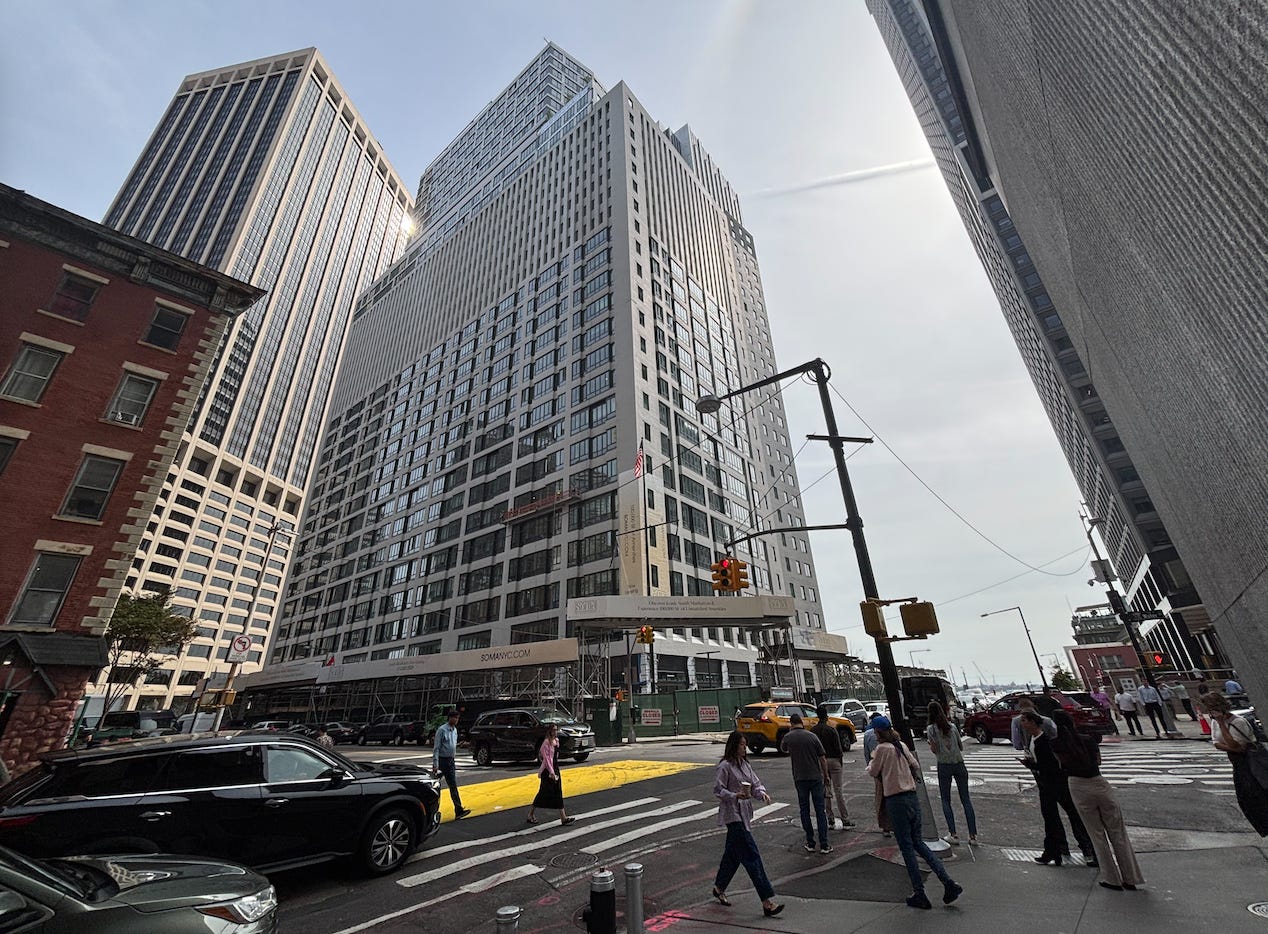
Eliza Relman/Business Insider
- A Manhattan building that formerly housed JPMorgan’s offices has been converted into 1,320 apartments.
- The building offers amenities like recording studios, pools, and a sprawling gym.
- NYC leads the country in office-to-residential conversions, boosted by government incentives.
Gazing out over New York Harbor from a poolside lounge chair on a 25th-floor terrace in downtown Manhattan, you might not believe the space used to be occupied mainly by JPMorgan Chase computers.
Until 2022, 25 Water Street was home to the bank’s back offices and, until 2020, housed the New York Daily News newsroom. Now, about half of its 1,320 rental apartments have been leased. The 32-story tower, which sits on the border of the financial district and the South Street Seaport, is the largest completed office-to-residential conversion project in the country.
A combination of the pandemic-induced shift to remote work and a worsening housing shortage has pushed some developers to lean into a decades-old effort to repurpose languishing commercial space into new homes. New York City is leading the country in the financially and architecturally complex endeavor, boosted by government tax incentives. This year, 8,310 units are set to come online in converted buildings.
25 Water Street, rebranded as SoMA for South Manhattan, is stacked with more than 100,000 square feet of amenities.
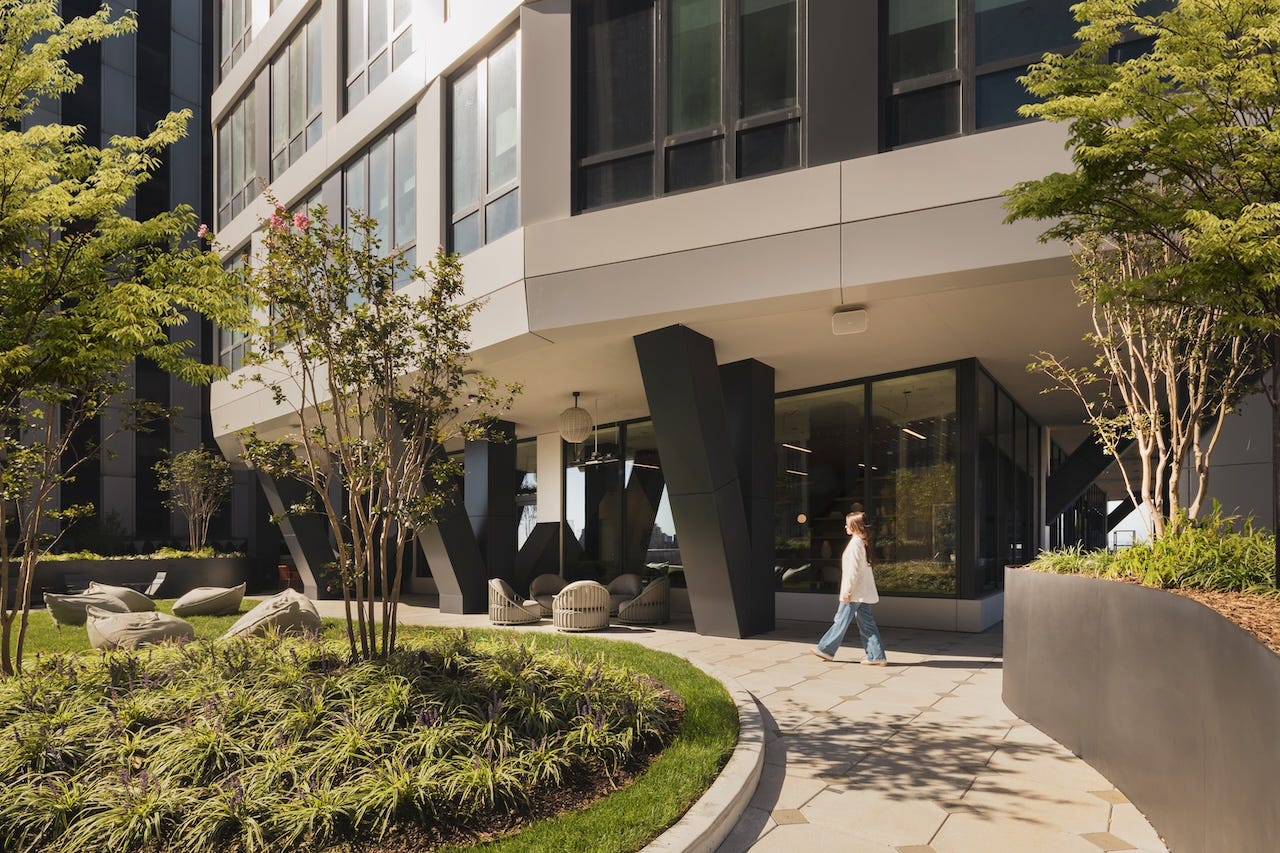
Ivane Katamashvili/SoMA
There are music and podcast recording studios, coworking spaces, two bowling alleys, indoor and outdoor pools, a gym with pickleball and basketball courts, and a spa with an infrared sauna.
The amenities cost extra.
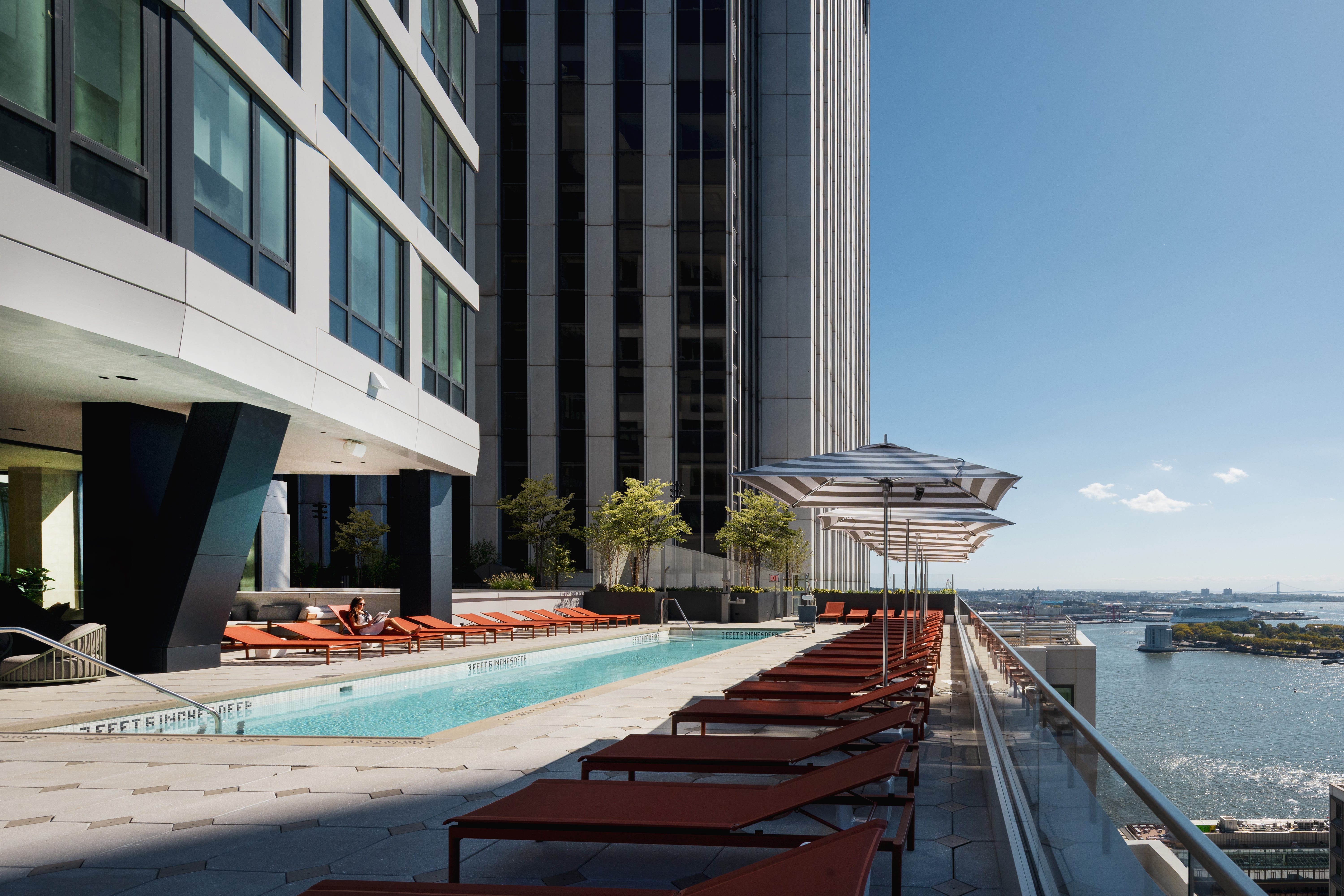
Ivane Katamashvili/SoMA
The elaborate amenities cost tenants on average $150 a month to use (with WiFi included), said Sarah Patton, who leads marketing and leasing for the building. That’s on top of the relatively steep market-rate rents, which range from the high $3,000s for a studio to three-bedrooms that start at $10,000 a month.
A quarter of the building’s units are permanently rent-stabilized and affordable for tenants making between 40% and 90% of the area’s median income.
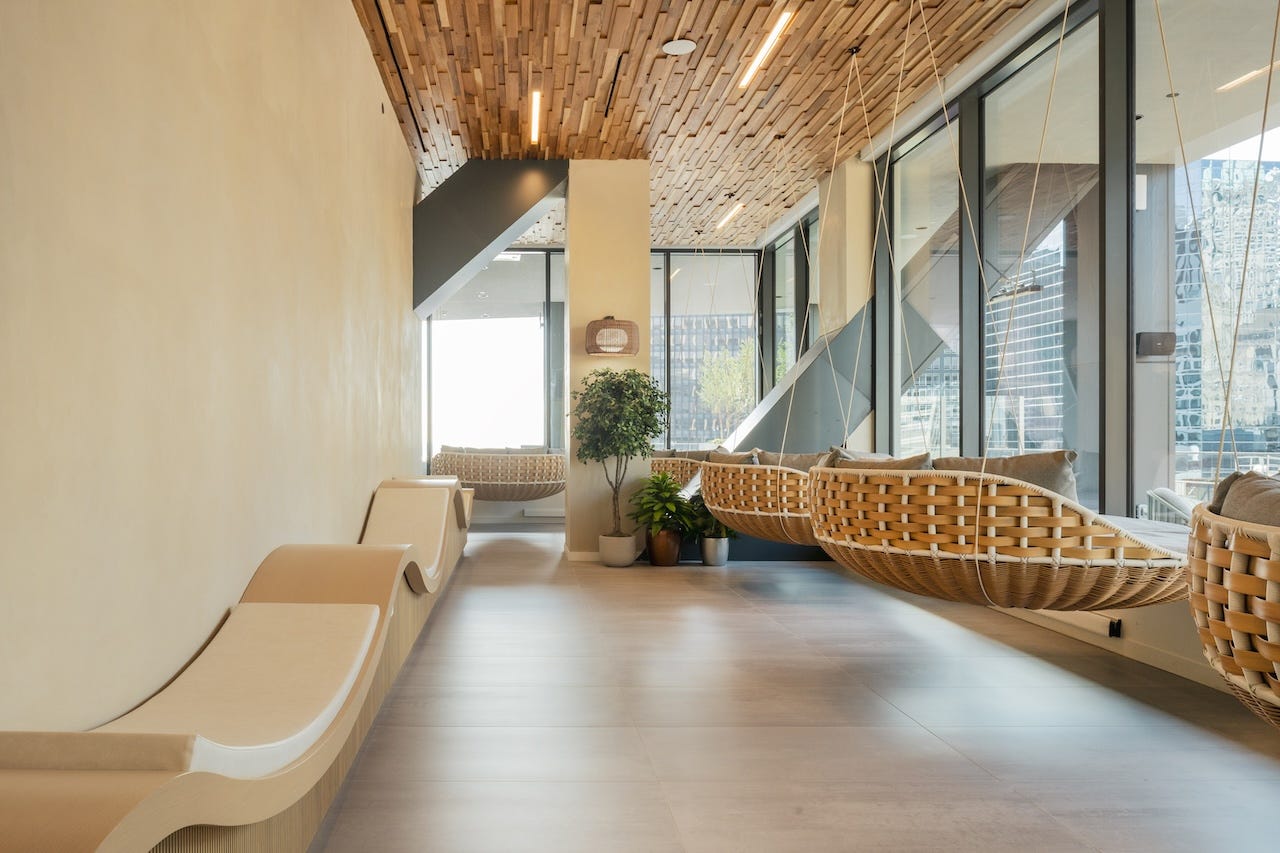
Ivane Katamashvili/SoMA
Eligible incomes for the building’s 330 affordable apartments range from $37,612 to $180,810, depending on the size of the family.
The building was the first to take advantage of a new 35-year tax abatement program run by the state for commercial-to-residential conversion projects.
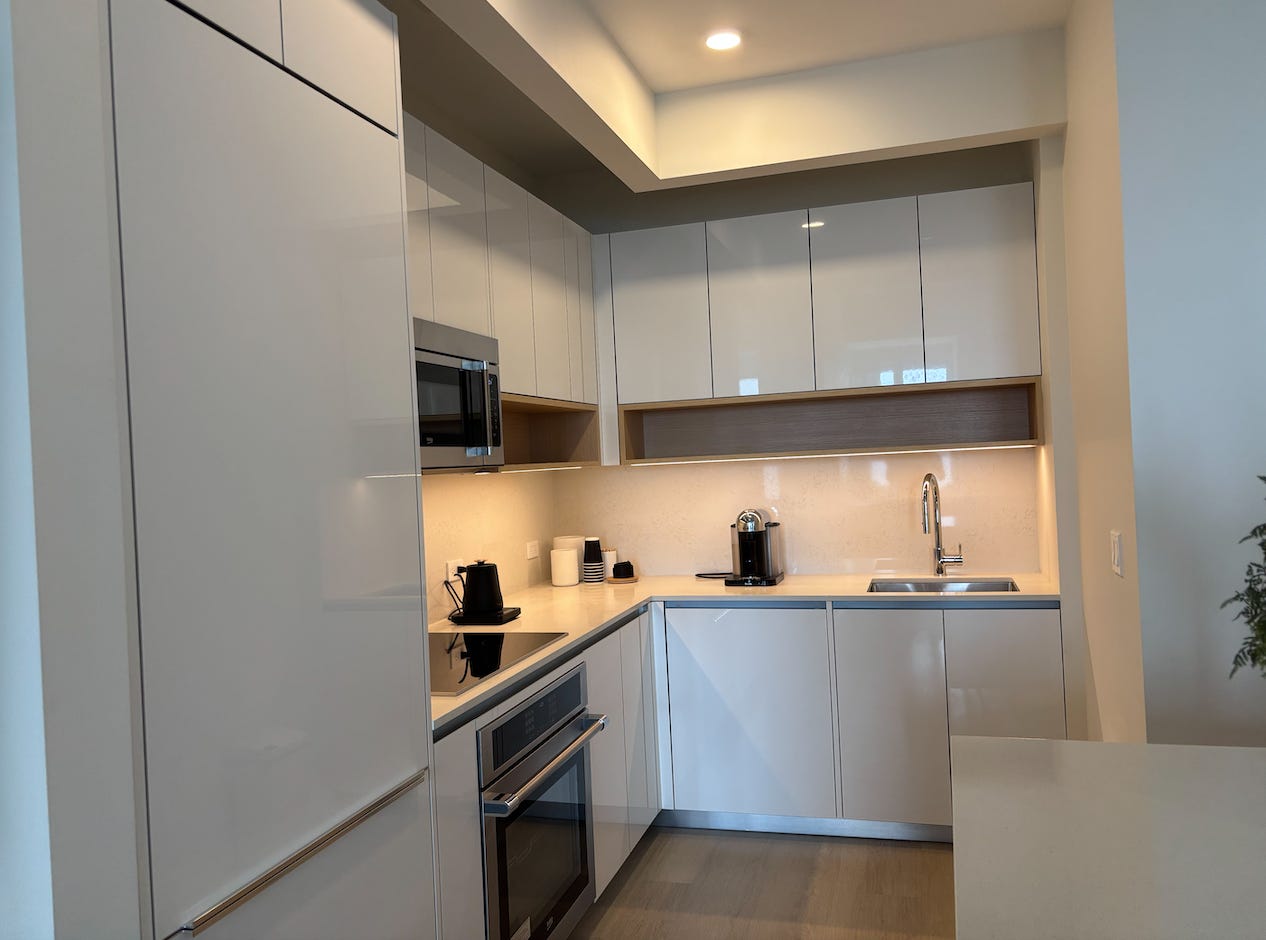
Eliza Relman/Business Insider
Without the tax incentive, all of the building’s apartments would have been market-rate, said Brian Steinwurtzel, co-CEO of GFP Real Estate, which bought and developed the building with Metro Loft Management and Rockwood Capital.
Steinwurtzel said the program, called 467-m, which GFP advocated for and the New York State legislature passed in 2024, “is actually well designed in its structure,” but the city’s affordable housing lottery is frustratingly slow.
Competition for the affordable units is fierce and the city’s application process is slow.
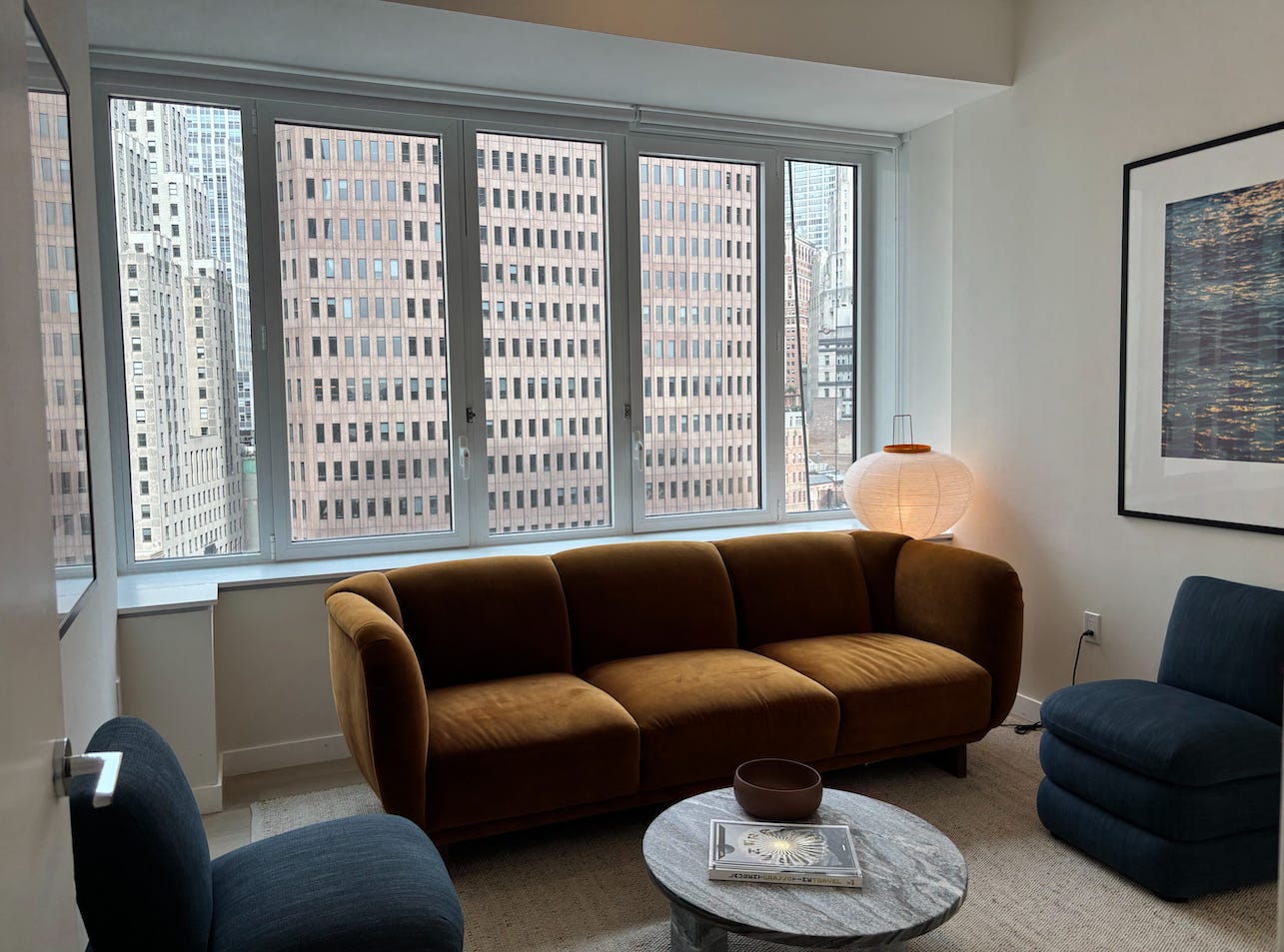
Eliza Relman/Business Insider
The city receives about 450 applications through the lottery for each available unit, citywide.
“We can generate a lease very quickly, and the resident could really sign a lease very quickly, but the process to go through the lottery and all the checks that have to be done and all the sign-offs from the city are really complicated and take a very long time,” Steinwurtzel said.
He’d like to see the city simplify and shorten the application process so that tenants can move in much more quickly, saving residents and the building owners time, money, and unnecessary stress.
Conversions are notoriously architecturally complex and often financially infeasible.
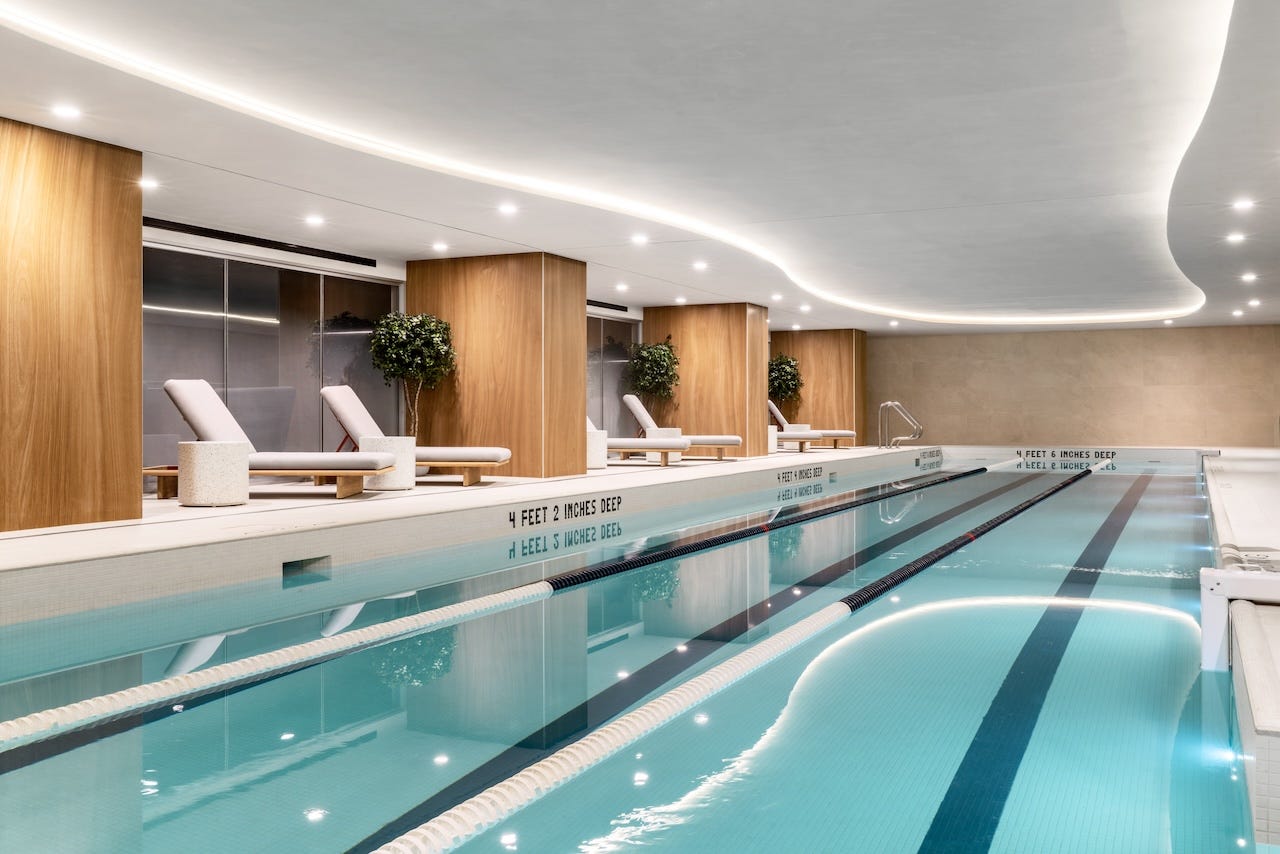
Streetsense/SoMA
When GFP and its co-developers bought 25 Water in 2022, “most people thought that we were crazy,” Steinwurtzel said.
But GFP and its co-developers timed the project well.
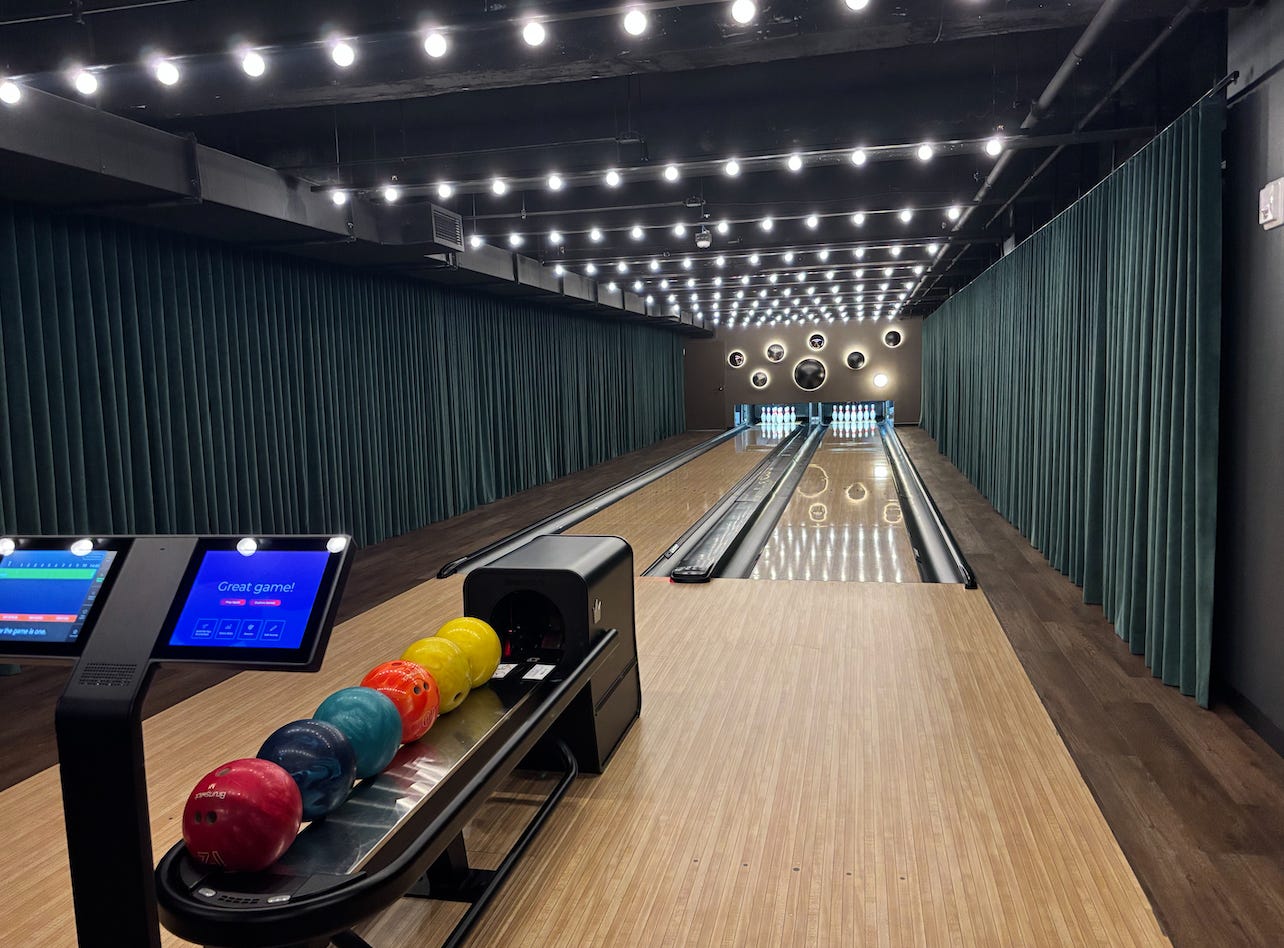
Eliza Relman/Business Insider
The developers bought the building for about $250 million as New York’s commercial real estate market was hitting rock bottom, and have since benefited from the city’s resurgence post-pandemic.
Still, Steinwurtzel expects the pipeline of conversions to slow unless the city or state extends the tax incentives or the commercial real estate market plunges back into crisis.
The key to converting offices into living space is maximizing the amount of exterior wall per unit to fill each apartment with as much light and air as possible.
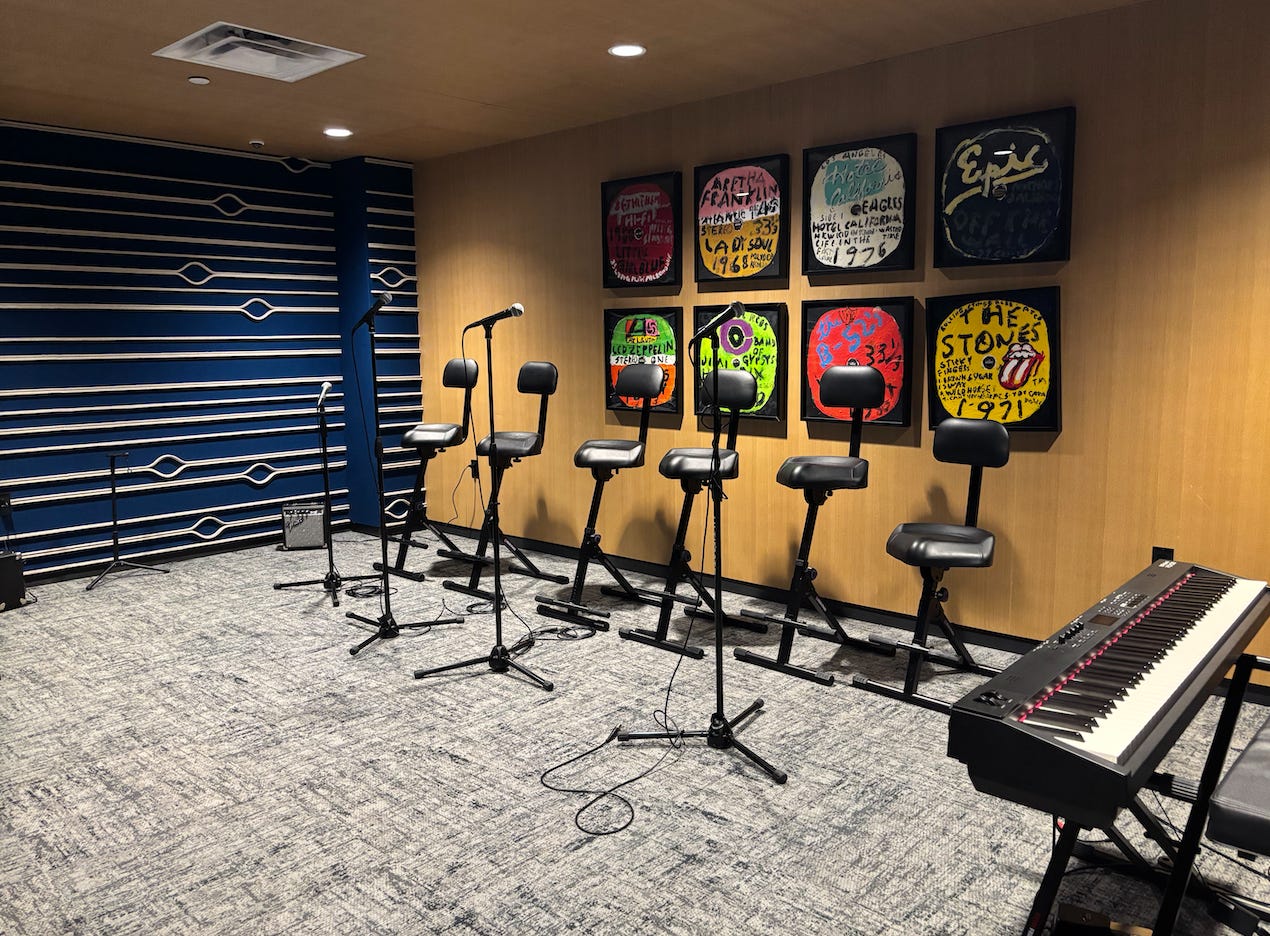
Eliza Relman/Business Insider
At 25 Water, this meant cutting two light wells into the center of the building and adding 10 floors to the top. The facade was originally designed to resemble an IBM punch card, with small, sparse windows, so lots of new windows had to be added.
“We created the hole in the doughnut to bring the light and air into the middle of the space,” John Cetra, the Manhattan architect and cofounder of CetraRuddy, which led the design of 25 Water, previously told Business Insider.
There are some perks to living in a converted building, including higher ceilings and a wide variety of apartment layouts.
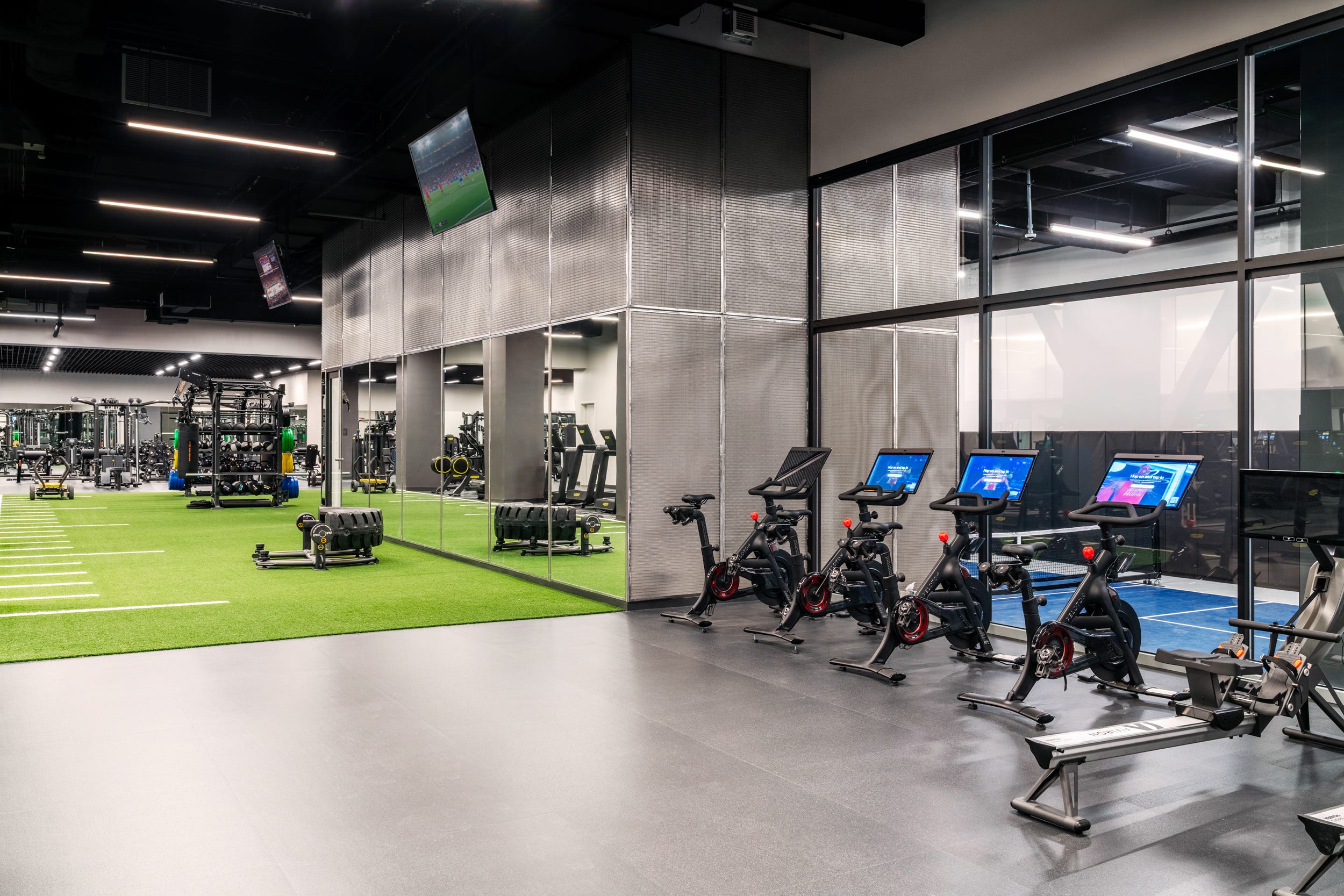
Streetsense/SoMA
“The ceiling heights that you get in the units are much higher than a new build residential product,” Steinwurtzel said.
A recent rezoning in Midtown Manhattan is expected to supercharge the commercial conversion craze.
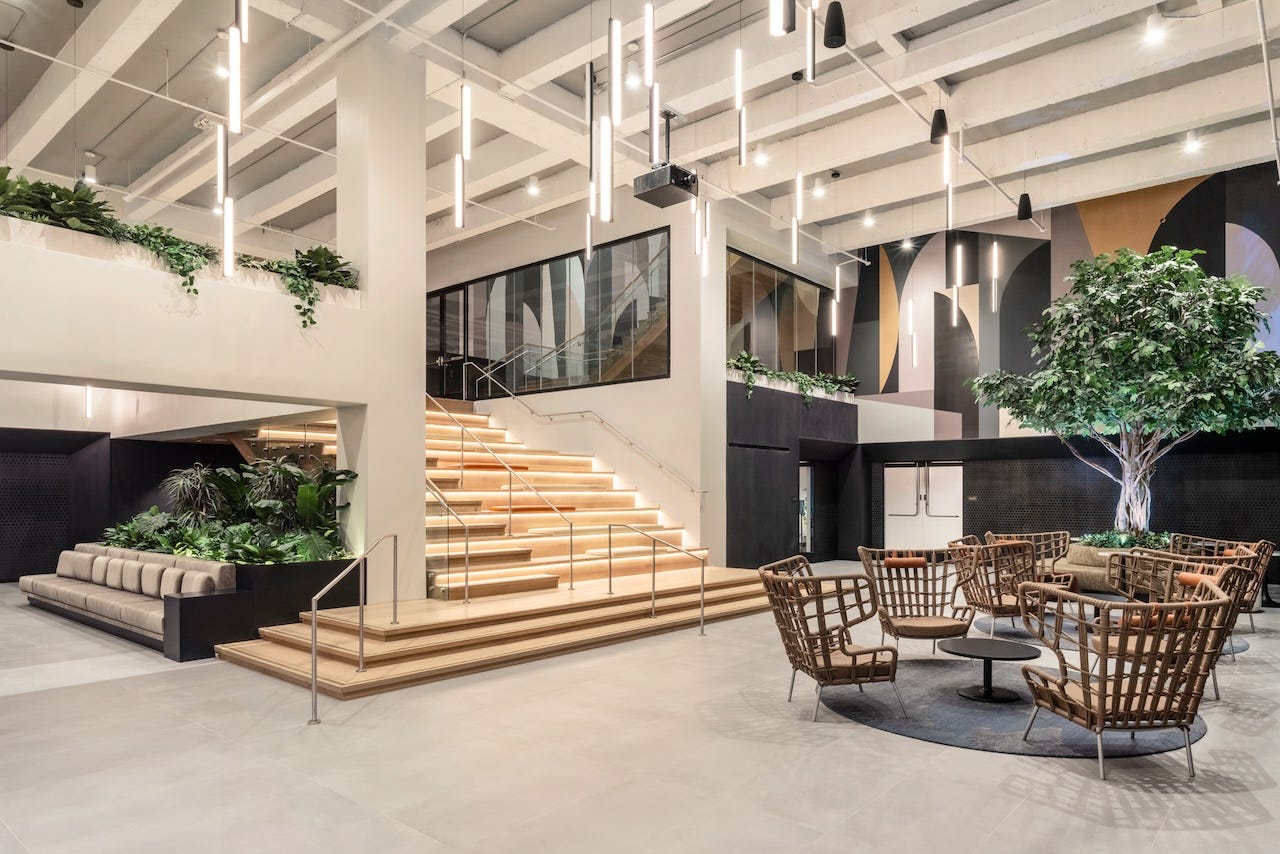
Streetsense/SoMA
The transformation of Pfizer’s former headquarters into 1,602 apartments is expected to overtake 25 Water as the city’s largest-ever conversion when it’s finished next year.
Read the original article on Business Insider
The post See inside JPMorgan’s old Wall Street offices that are now 1,320 apartments and over 100,000 square feet of gyms, pools, and recording studios appeared first on Business Insider.




